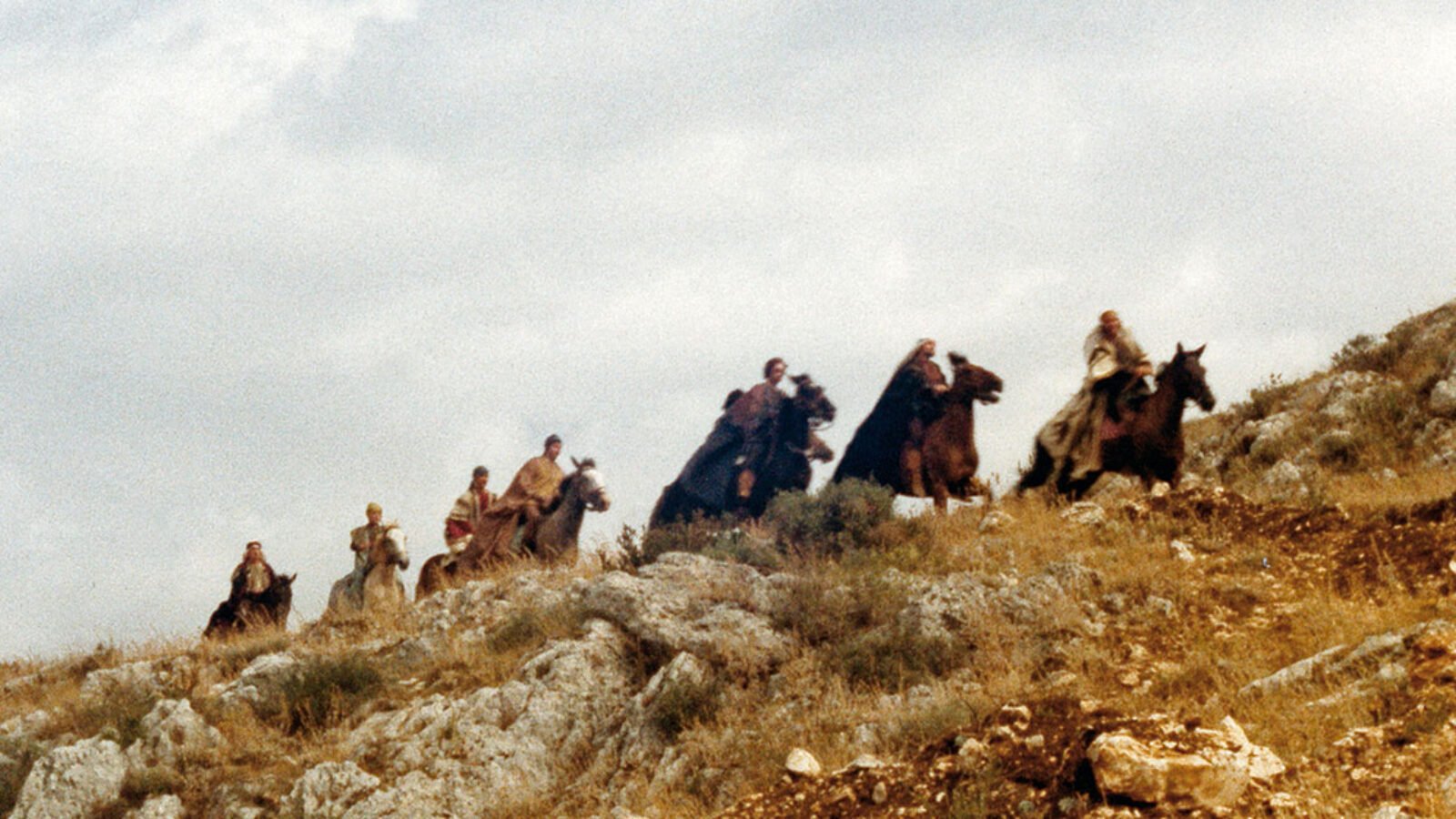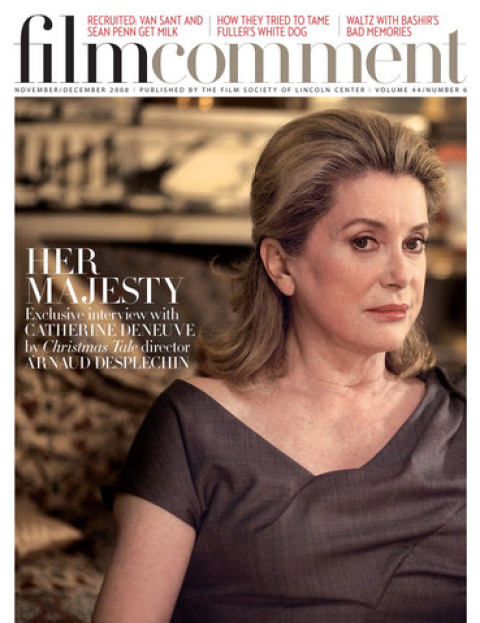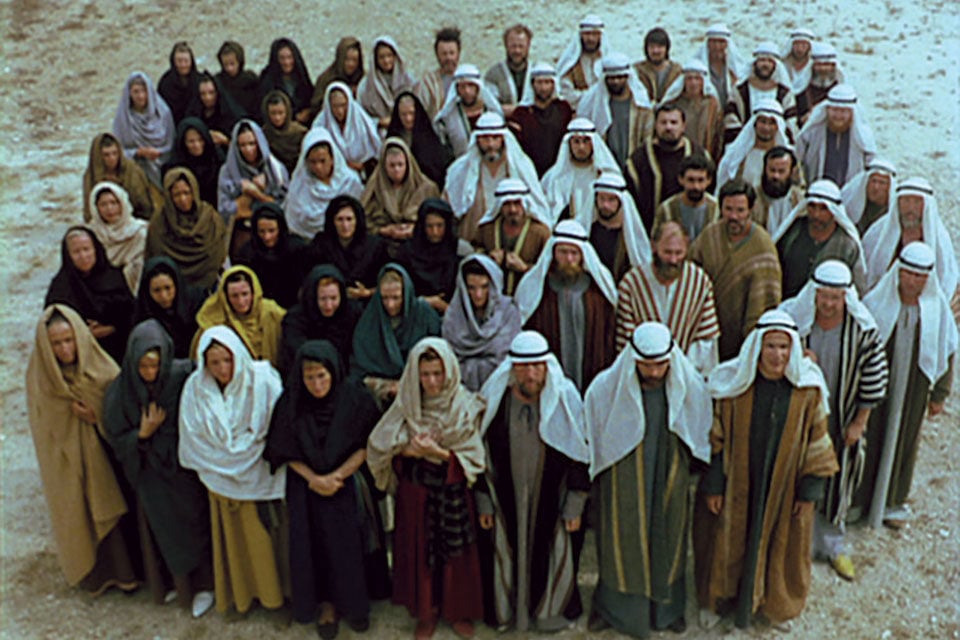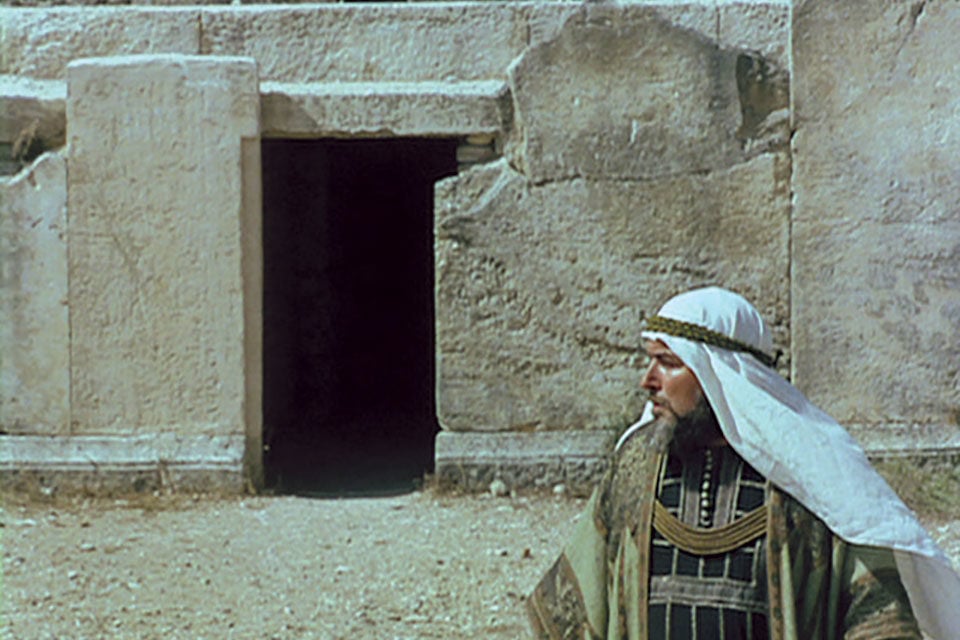
Holy Ghosts
Arnold Schoenberg composed his monumental 12-tone opera Moses und Aron during the years 1930 through ’32. It marked the end of a productive 10-year period during which he had refined and expanded his new “method of composing with 12 tones related only to each other.” By this point he could write a two-hour dramatic work based entirely on one 12-tone row. While filled with creative and personal happiness (Schoenberg married his second wife Gertrude Kolisch in 1924), the period also coincided precisely with the rise of the Nazis. Having been an early convert to Protestantism, Schoenberg found his own cultural and religious identification with Judaism returning. As early as 1923 he wrote to Kandinsky expressing this identification and predicting both the catastrophe that was to befall the Jews of Europe and the eventual complicity of those who, like Kandinsky himself, had already agreed with the Nazi propaganda machine that there was a “Jewish Problem.”

Elaborating on Exodus, Schoenberg’s libretto tells the story of the calling of Moses, who lacked the gift of oratory, to lead his enslaved people to the promised land; the paradox of his reliance on Aaron’s miracles to represent an invisible, fathomless God; the people’s descent into idol worship and ritual sacrifice during Moses’s 40-day absence on Mount Sinai; and his return with the Ten Commandments. Schoenberg’s work on the opera’s final act was preempted by his need to flee Berlin, where he had been teaching composition at the Prussian Academy for the Arts. In Paris, en route to the United States, he officially reconverted to Judaism. Once settled in Los Angeles, where he lived until 1951, he never found the time to complete the opera. (He applied for a Guggenheim grant to do so, but was turned down.)
As significant and as influential as his 12-tone “method” turned out to be, for Schoenberg it was a way of continuing to compose as he always had, a way of organizing the musical language which had emerged gradually in his first post-tonal works of 1908 and 1909. A natural composer who worked at a high speed and with feverish intensity, his language was never a slave to theory, and it continued to evolve after he had settled in the United States. His last phase of composition includes works that are entirely tonal and some that bridge the tonal and non-tonal worlds, alongside those that are strictly 12-tone.

Moses and Aaron
Schoenberg and other composers of the early-20th century who were writing highly chromatic, “atonal” music no longer based on major and minor scales, sought organizing principals for this new and uncharted musical territory. Schoenberg’s idea was to give each piece its own particular sound-world by basing it on a distinctive melodic arrangement of the 12 half-steps of the Western chromatic scale (i.e., all of the notes found within an octave) which he called a 12-tone “row.” The row then became the musical DNA for that one work—the underlying source of all of its notes. This did not so much change Schoenberg’s language as unify it.
The music of Moses und Aron (the superstitious Schoenberg omitted the double “A” in Aaron so that the title would not contain 13 letters) is comprised of four elements: Moses, who intones a rhythmically precise Sprechstimme (speech-song) like that used in Pierrot Lunaire; Aron, who sings soaring, angular melodies; the chorus, from which individual voices emerge to take on small roles and which divides in multiple ways to portray the Jewish people, as well as the voice of the burning bush; and the orchestra, which animates the work with its inspired, spiky, fiercely contrapuntal music. This is no period piece. Schoenberg’s artistry takes the unity of its underpinnings and runs with it, painting the conflict between Moses’s inward spirituality and Aron’s ability to communicate as an urgent, contemporary, abstract-expressionist canvas. The combined speaking and singing of the burning bush which calls to Moses in the opening scene; the miracles Aron produces to convince the Jewish people to follow Moses to the promised land; the worship of the Golden Calf and the sacrifices which follow; and the final confrontation between the two brothers, when Moses returns from the mountaintop and smashes the sacred tablets in despair—all these large-scale events and countless other small ones are embodied in music of extraordinary incisiveness and vividness. The work was clearly fueled by a sense of identification, reflecting both the current historical urgency of rescuing European Jewry, and the composer’s personal sense of embattled mission, wedded as he was to a musical language rooted not in external “style,” but in musical ideas. If Schoenberg never managed to complete Moses und Aron, it may have been because that moment of urgent identification had passed. But it also could simply be because the ending, as it stands, is perfect.
In 1973, six years after making their extraordinarily beautiful Chronicle of Anna Magdalena Bach, Jean-Marie Straub and Danièle Huillet produced a film version of Arnold Schoenberg’s great work (which has now been issued on DVD). As they had in the Bach film, the Straubs sought to strip their cinema bare of anything that could be seen to deliberately dramatize the story, establishing with exquisitely subtle, mathematically plotted camerawork and formalized direction, a visual counterpoise to Schoenberg’s complex score. The film was shot in the deserts of Egypt and Israel, and in the Italian Alba Fucens amphitheater, with the performers singing live along with the prerecorded orchestra. The performance used was superb (Michael Gielen conducting the Austrian Radio orchestra and chorus, with Günter Reich as Moses and Louis Delvos as Aaron).

Moses and Aaron
While mirroring the technical rigor underlying the music, the Straubs also established a directorial method that brilliantly underscored the work’s themes: Moses and Aron’s dichotomous relationship is presented with an extraordinary visual economy—yet they are never framed in exactly the same way. Sometimes the camera remains fixed; sometimes it circles them. Oftentimes when we see one, we hear the other singing. Their opening dialogue culminates in a shot of twin mountain peaks in the distance. The burning bush in the opening scene sings to us invisibly while we view the back of Moses’ head. Throughout, the chorus is seen primarily in long shot, and is often out of frame precisely when it is most important. At the most exulatant moments the camera pans across the distant Nile, or to vistas of lush landscape (“the land of milk and honey”), or to open sky. Counterintuitively, the Straubs let the music itself be Aron—pulling us into the spiritual domain of the piece—while providing only restricted, if austerely gorgeous visual elements of what we might normally expect to see. No opera film has showed less of the act of singing than this one. For the most part, their method is one of radical non-interference—a restraint that suggests the presence of an awe-inspiring spiritual reality. By contrast, the Jews’ regression into paganism is reflected explicitly. The miracles are indicated in a literal, albeit spartan, manner. Actual sheep and cattle, whose sounds are heard on the sound track over the music, are herded before the Golden Calf; the dance of the butchers before the altar has an almost jarring crudeness; the orgy is also suggested, in an emblematic way, much as it might be in a school pageant (although with slightly more nudity).
Like Pasolini’s 1964 Gospel According to St. Matthew, the film conveys a Marxist perspective on ancient scripture, emphasizing the opera’s theme of rebellion against oppression. Again, as in the matter-of-fact realism of the Pasolini work, the film scrapes away the reverential patina surrounding religious subject matter to reveal contemporary urgency. No production of the Schoenberg opera has ever made one hear it so keenly.
Composer Allen Shawn is the author of Arnold Schoenberg’s Journey and Wish I Could Be There: Notes from a Phobic Life.







